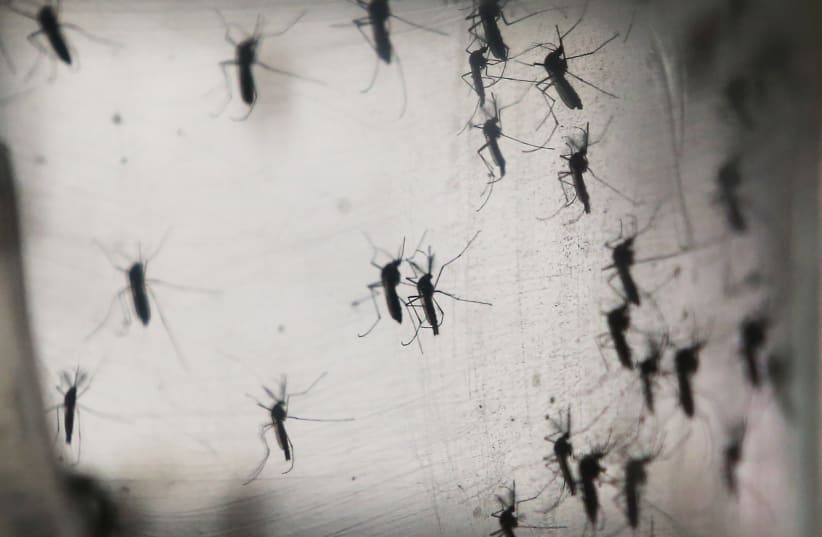West Nile Virus continues to claim victims, with Maariv reporting that at least 100 people have been infected with the disease, and eight are hospitalized in intensive care units and are currently sedated and ventilated in critical condition.
Most patients are residents of central Israel, with some from the Sharon region, and are hospitalized at Meir Medical Center in Kfar Saba.
Six patients are hospitalized at Sheba Medical Center, three of which are ventilated and in critical condition. So far, five patients have died at Rabin Medical Center-Beilinson Campus in Petah Tikva. Eight are hospitalized, and eight more suspected patients have not yet been verified in the central laboratory for viruses.
At Meir Medical Center, 25 West Nile fever patients are hospitalized, two of them are in serious condition and are being ventilated and sedated. Additional patients were admitted to the Ichilov Hospital in Tel Aviv.
West Nile virus is caused by a virus residing in the wild, typically among birds. The course of the disease begins when mosquitos bite birds and transmit the virus to them, which continues to live in the birds' bodies. In the next step, the mosquitos continue to bite, transmitting the virus to animals and humans.


For the most part, the virus is considered a mild disease, but in some cases, it causes severe morbidity and even death. The infection usually passes without symptoms. In some cases, a flu-like illness appears which goes away on its own. Symptoms include fever, headache, weakness, joint and muscle pain, conjunctivitis, rash and sometimes nausea and diarrhea.
The disease is reportedly severe in 1% of cases and includes neurological signs corresponding to meningitis, acute encephalitis, or acute flaccid paralysis. The incubation period is usually 7 to 14 days, and in exceptional cases, three to 21 days. The disease does not pass from person to person.
Those at risk of exposure are patients with chronic diseases that suppress the immune system, cancer patients with poor immune systems, infants, and the elderly.
According to medical literature, the virus is transmitted in nature only by infected mosquitoes, and there is no evidence to suggest infection could spread from an animal to humans. There is no vaccine for humans against the virus. Currently, a vaccine exists only for protection in horses.
There is no specific treatment for the disease. Attempts are made to administer an intravenous infusion of antibodies called IVIG and the drug interferon, which may strengthen the immune system's ability to eliminate the spread of the virus in the body.
As part of their care, patients receive fluids, antibiotics to prevent secondary infection, and, when necessary, are put on ventilation devices. The main method to prevent the disease is to prevent mosquito bites through the use of mosquito repellents, adequate window screens, appropriate clothing, and reporting mosquito clusters near water reservoirs to relevant authorities.
What warning signs require a visit to the emergency room after a mosquito bite?
•Warning signs included prolonged fever for over a week, multiple cases of vomiting while attempting to drink, failure to urinate for more than ten hours, rapid breathing (over 20 per minute in an adult, over 40 per minute in a child), a decreased state of consciousness, aversion to light, and Headaches that are unusual in intensity or that wake you from sleep.
